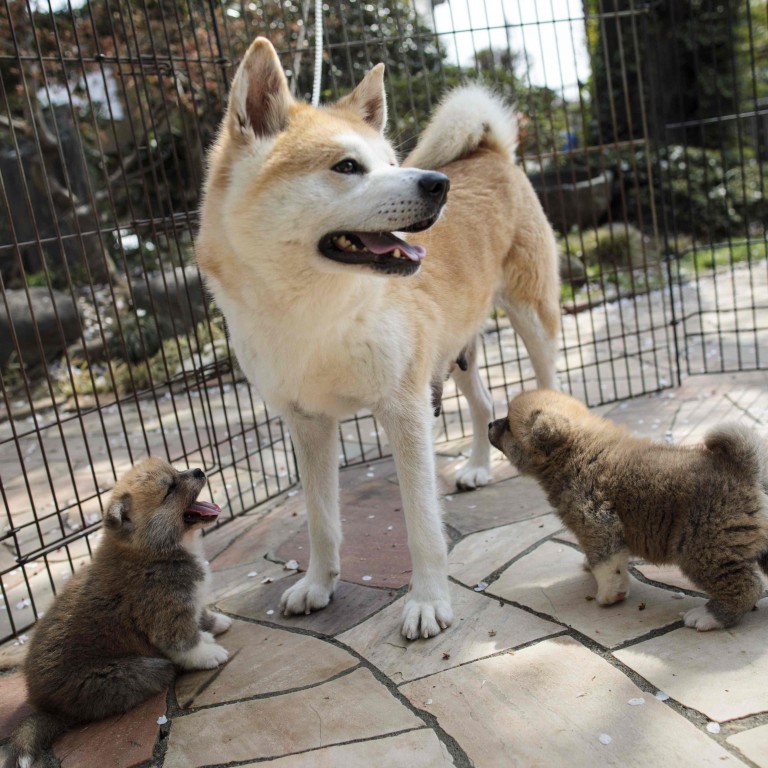
Japan’s home-grown dogs may be national treasures but they face extinction in favour of ‘cuter’ imported breeds
- These larger dogs are being supplanted in Japanese homes by daschunds, miniature poodles and chihuahuas
- The problem has been exacerbated by a shrinking total population and a gradual shift of young people to live in cities
The obsession among Japanese dog-lovers with smaller and “cuter” imported breeds is pushing some of the nation’s indigenous canine species to the brink of extinction, according to an organisation set up to protect home-grown dogs.
Japan is home to six native dog species – the Shiba, Akita, Kai, Kishu, Shikoku and Hokkaido – and all were officially recognised as national natural treasures in the 1930s. More recently, however, these larger dogs are being supplanted in Japanese homes by daschunds, miniature poodles and chihuahuas.
There is particular concern over the survival of the four breeds categorised by the Japan Dog Preservation Association as medium-sized; the Kishu, Shikoku, Hokkaido and Kai. Records suggest that while there were more than 5,100 certified purebred examples of these four species in Japan in 1989, the total had fallen to a mere 689 by 2018.
How the rest of the world fell in love with Japan’s famous Akita dogs
“In the countryside it is possible to have big dogs because they need a lot of space to run around,” said Hitomi Nabeta, a spokeswoman for the association. “But in Tokyo it is very difficult because people’s homes are small, there are not many areas to exercise them and it can be expensive to care for them.
“In recent years we have seen a sharp rise in the popularity of imported, smaller breeds of dog. And that has meant that numbers of these indigenous species has fallen.”
The problem has been exacerbated by a shrinking total population and a gradual shift of young people from rural regions to the nation’s cities in search of jobs. Nabeta added that more children are suffering from allergies after petting animals, an indication reduced exposure is weakening people’s natural resistance.

A zoo in Wakayama Prefecture has recently added two Kishu dogs to its exhibits. The breed is native to the region of central Japan and were in the past used as hunting and guard dogs.
Akita dogs, however, are undergoing something of a renaissance among the public, thanks in large part to the Akita Dog Preservation Society hearing of comments by Russian figure skater Alina Zagitova about the breed. Zagitova, winner of the gold medal at last year’s Pyeongchang Olympic Winter Games, expressed her delight at seeing one of the dogs in a magazine and the association presented her with a puppy.
While the coverage has promoted interest in the breed in the short term, it remains unclear whether such opportunities will be sufficient to reverse the longer-term trend for cuter and smaller pets.

